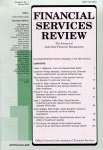An Analysis of Nondeductible IRA Contributions and Roth IRA Conversions
DOI:
https://doi.org/10.1016/S1057-0810(97)90003-2Abstract
On average investors have an income replacement rate of 64% of their pre-retirement income, which in many cases results in a lower tax rate in retirement. We analyze the impact of declining withdrawal tax rates on the choice between taxable mutual fund investments and nondeductible IRAs. The relative attractiveness of the taxable mutual fund option declines significantly when withdrawal tax rates decline. Converting existing IRAs to Roth IRAs is generally beneficial for investors who remain in the same tax bracket upon withdrawal. For short (long) time horizons and low (high) expected returns, the marginal value of conversion in I998 is greater (less) than the marginal value of optimal conversion. For investors dropping into the 15% tax bracket, conversion is generally not beneficial unless the conversion is done optimally, the time horizon is long, and the expected return is high. Investors in the 15% tax bracket should convert existing IRA assets.
Downloads
Published
How to Cite
Issue
Section
License
Copyright (c) 1997 JAI Press Inc.

This work is licensed under a Creative Commons Attribution-NonCommercial 4.0 International License.
Author(s) retain copyright and grant the Journal right of first publication with the work simultaneously licensed under a Creative Commons Attribution-NonCommercial 4.0 International License that allows to share the work with an acknowledgment of the work's authorship and initial publication in this Journal.
This license allows the author to remix, tweak, and build upon the original work non-commercially. The new work(s) must be non-commercial and acknowledge the original work.


